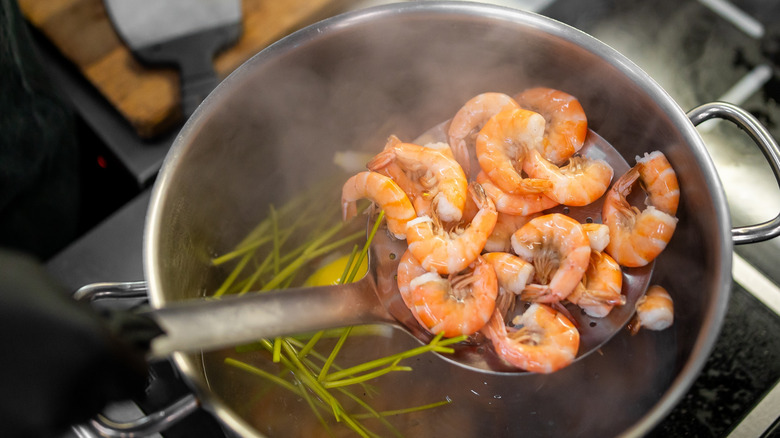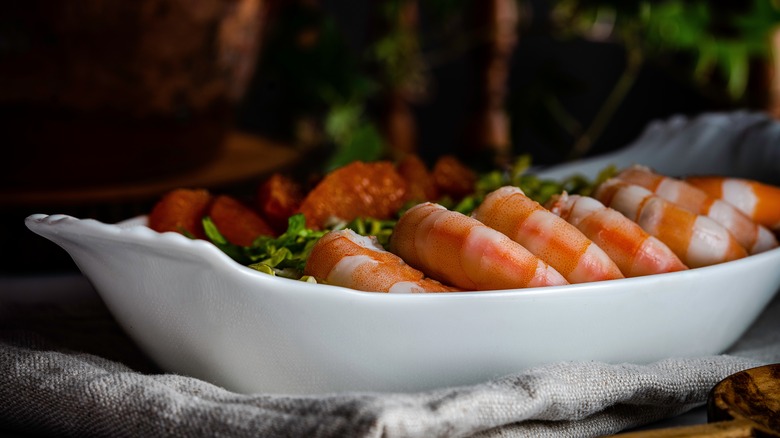Why Smaller Shrimp Are The Best Type For Poaching
Poaching is one of the easiest and gentlest ways to cook shrimp. As with any nuanced ingredient, some shrimp are better suited to poaching than others. We spoke to an expert, Jason Ryczek, who's the research and development chef at Pappas Restaurants Inc., for some advice on which types of shrimp are ideal for poaching and other best practices, so your next meal is delicious every time.
Ryczek says when it comes to shrimp, size matters. "I have found that the larger the shrimp, the more likely they'll be tough when poached and chilled," he said. "This really comes down to method and control, but smaller shrimp are quick and tend to be a little more forgiving." In terms of varieties, Ryczek is a fan of wild blue shrimp caught from the Sea of Cortez or California spot prawns for their flavor and texture. The wild blue shrimp, he says, have a firm texture that's similar to "snapping a hot dog without being tough," and the California spot prawns have more of a lobster-like texture. When buying grocery store shrimp, prawns are often bigger in size and more expensive, though both are similar in taste.
Tips on how to poach shrimp
Ryczek prefers to poach small shrimp in seawater, but if that isn't an option, aim for 3% salinity in your water before you start cooking (a kitchen scale is your best friend to help you measure grams of salt). Ryczek uses a combination of sel gris salt and kombu (edible kelp that adds umami flavor) to get to that concentration. Once the shrimp is cooked, he spreads them out on a tray and places them in a blast chiller. The goal is simply to keep the shrimp from soaking up excess water, so drying them on a tray in the refrigerator should work, too.
To flavor shrimp, he said, "I create a seasoned soak with ice to stop the cooking process but allow them to take on additional flavors. This is a method I use when cooking shrimp from the Gulf, where they tend to have stronger off-putting flavors." You can also use this liquid to boil shrimp as a game-changer.
Knowing when the poaching process is complete takes a bit of testing, and yes, sampling. Ryczek advises that the best way to check whether your shrimp is cooked properly is to "break one open, examine the interior, feel the snap as it breaks, and taste it." He looks for just a touch of translucency so the carryover heat can finish the cooking process. He also aims for a harder break on the outside of the flesh with a slight flakiness to its interior.

